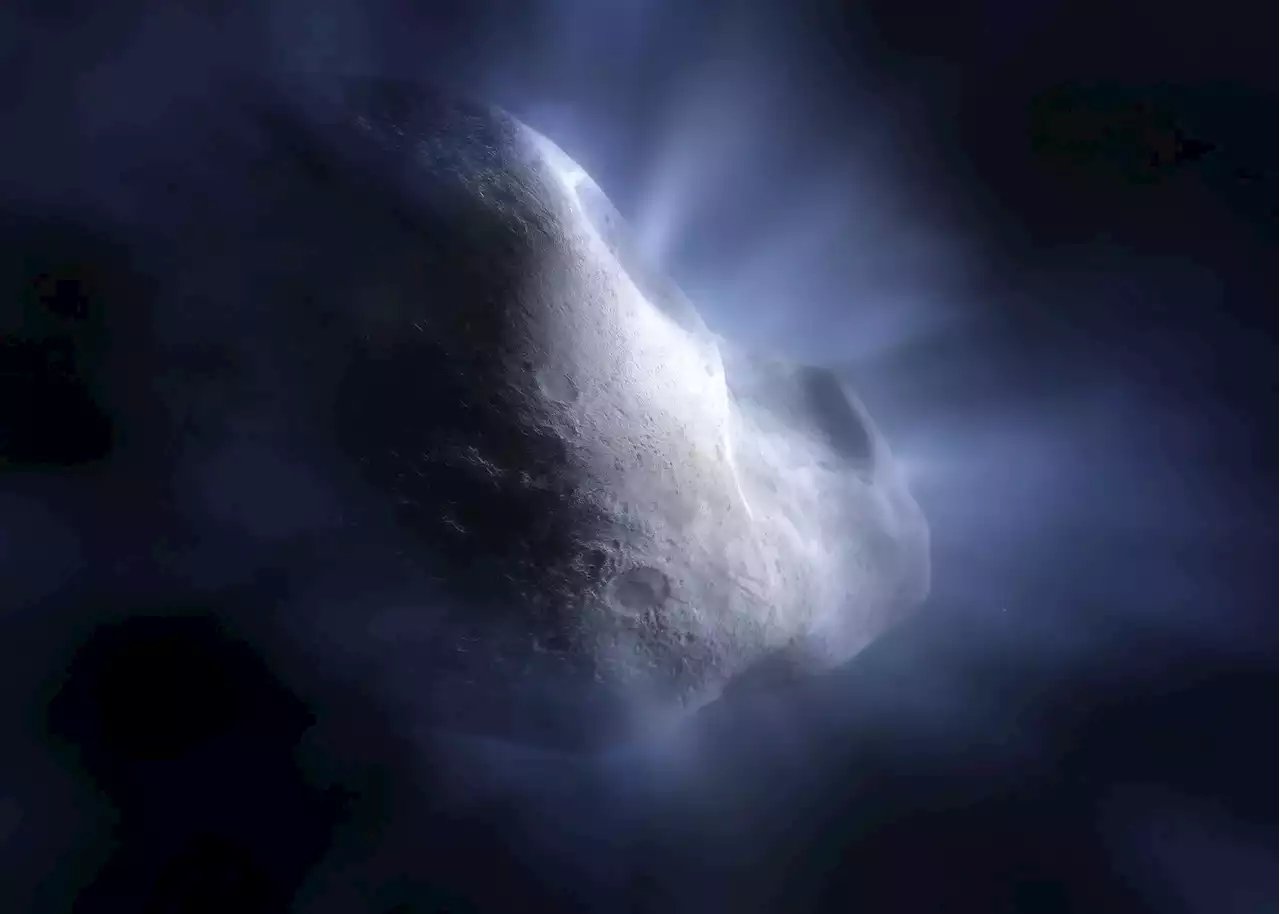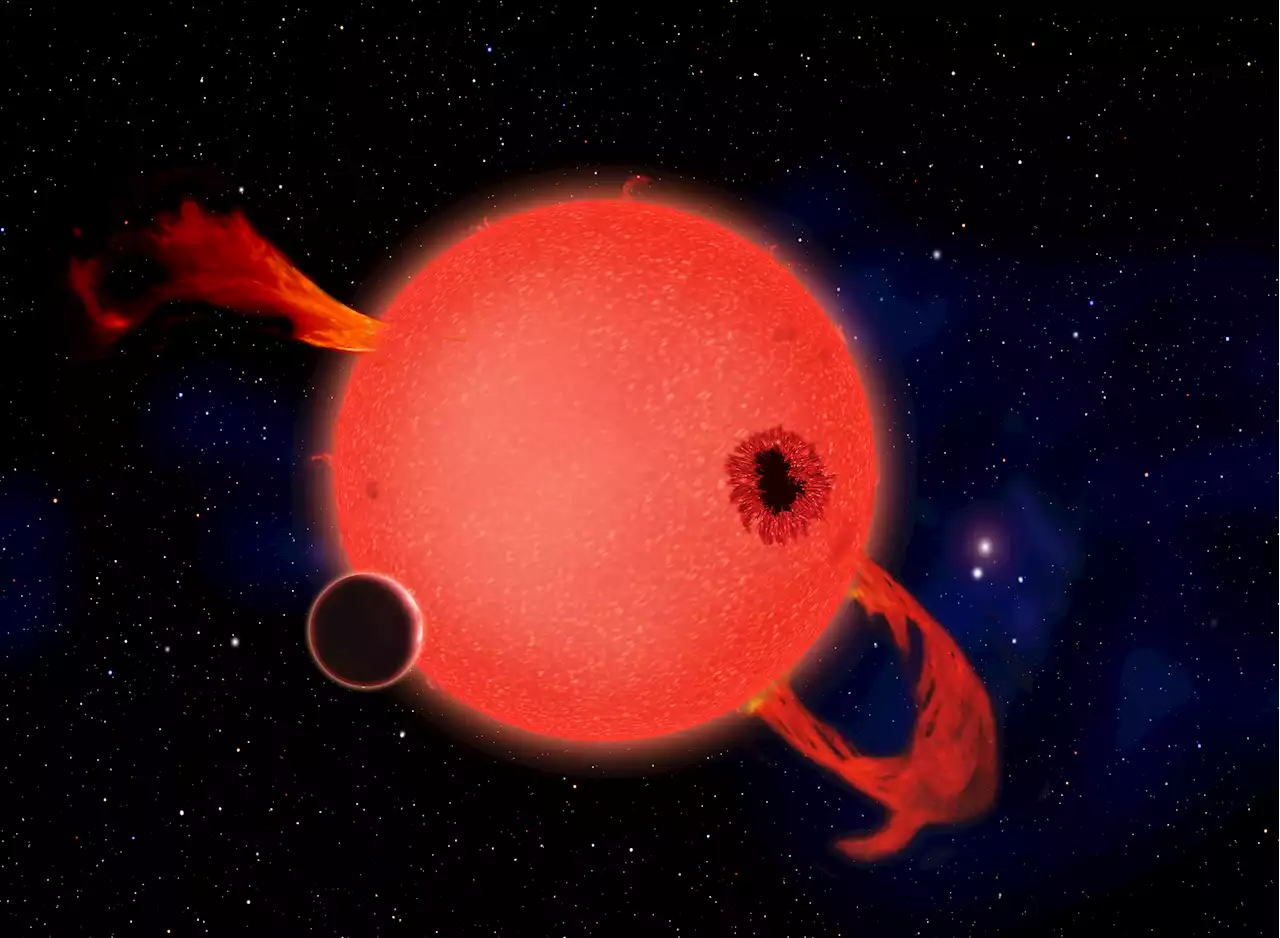Astronomers Find a 'Red Nova': A Main-Sequence Star Just Eating its Planet - by PaulMattSutter
, known as ZTF SLRN-2020, may just fit the bill. Previous cases of suspected star-planet interactions happen in very young systems, where planets are on chaotic trajectories, colliding into each other and occasionally diving headfirst into their stars. But in this case the star is on the main sequence, meaning that it is a normal middle-aged star.
The astronomer behind the study concluded based on theoretical calculations that however this planet ended up getting close to its star, it was not a simple matter of the planet slipping into the atmosphere of the star and calling it a day. Instead it went through several violent phases as the planet was torn apart and the Red Nova flared.
As the planet neared the star it heated up, with its outer layers turning into a plasma. Complex flows of electricity and magnetism caused this plasma to launch a pair of jets away from the planet as it was orbiting the star. However, those jets were not powerful enough to escape from the gravitational influence of the star completely, and so that material rained back down.
But even though the planet reacquired some of its mass lost in the form of the jets, the planet lost it again due to the intense energies near the surface of the star. Before complete engulfment, the planet might have formed an accretion disk around the star itself. Material from the destroyed planet slowly leaked and funneled into the star before it was all finally over.
Needless to say, the interaction between the planet and the star over the course of its engulfment released an incredible amount of energy resulting in the Red Nova. We still do not know the details of the system or how this planet came to be so unlucky. Astronomers hope to find even more of these
United States Latest News, United States Headlines
Similar News:You can also read news stories similar to this one that we have collected from other news sources.
 Unexpected New Quest for Astronomers After Webb’s Mysterious Find in Rare Main Belt CometThe James Webb Space Telescope’s latest discovery is a tale of two detections. Solar system scientists took NASA’s James Webb Space Telescope on a treasure hunt in the asteroid belt, and what they didn’t find turned out to be as significant as what they did. If a spectrum of possible chemical compo
Unexpected New Quest for Astronomers After Webb’s Mysterious Find in Rare Main Belt CometThe James Webb Space Telescope’s latest discovery is a tale of two detections. Solar system scientists took NASA’s James Webb Space Telescope on a treasure hunt in the asteroid belt, and what they didn’t find turned out to be as significant as what they did. If a spectrum of possible chemical compo
Read more »
 Apple now helps you discover concerts in Maps and Music | EngadgetApple now helps you find hot concert venues in Maps, and find upcoming shows in Music..
Apple now helps you discover concerts in Maps and Music | EngadgetApple now helps you find hot concert venues in Maps, and find upcoming shows in Music..
Read more »
 Astronomers spotted the most massive cosmic explosion ever recordedScientists have recorded the biggest cosmic explosion ever observed and it was 100 times the width of our solar system.
Astronomers spotted the most massive cosmic explosion ever recordedScientists have recorded the biggest cosmic explosion ever observed and it was 100 times the width of our solar system.
Read more »
 Astronomers Really Thought These Discoveries Could Be AliensSeveral times, scientists have picked up signals that looked like evidence of intelligent life.
Astronomers Really Thought These Discoveries Could Be AliensSeveral times, scientists have picked up signals that looked like evidence of intelligent life.
Read more »
 Astronomers identify volcano-covered planet that could have water on its surface | EngadgetThe boringly named LP 791-18 d is located about 90 light-years from Earth in the Crater constellation..
Astronomers identify volcano-covered planet that could have water on its surface | EngadgetThe boringly named LP 791-18 d is located about 90 light-years from Earth in the Crater constellation..
Read more »
 Astronomers Want Your Help to Identify Risky AsteroidsYou too can be an asteroid hunter, thanks to a citizen-science project set up by the University of Arizona's Lunar and Planetary Laboratory.
Astronomers Want Your Help to Identify Risky AsteroidsYou too can be an asteroid hunter, thanks to a citizen-science project set up by the University of Arizona's Lunar and Planetary Laboratory.
Read more »
